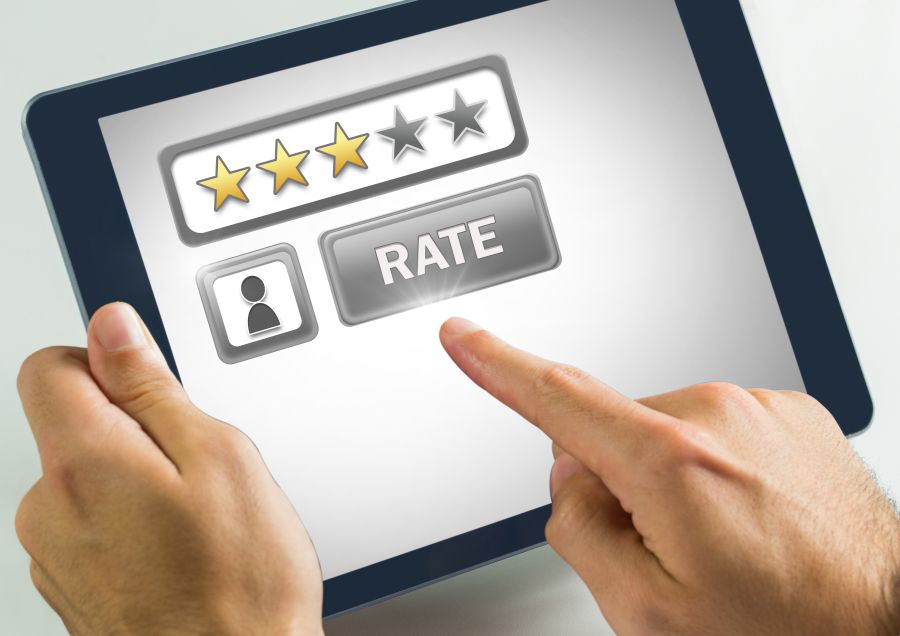Rating Restoration By Reputation Management. What pros say
Rating restoration is a critical aspect of a business’s success. In today’s cutthroat competitive environment, having a solid online reputation is no longer just a luxury but a necessity. Our expert team at Reputation Management is here to help you not only restore your ratings but also maintain and improve your online reputation. Through proven strategies and targeted efforts, we assure you that your business will regain the trust and confidence it deserves.
Rating restoration by reputation management:
Rating restoration, a crucial aspect of reputation management, involves addressing negative reviews, promoting positive ones, and continually monitoring online ratings. This process is essential for businesses to maintain a strong online presence, attract potential customers, and achieve long-term growth and success.

Unveil the power of reputation management in restoring your online ratings! Read on as we reveal proven strategies, benefits, and tips on utilizing this approach to enhance your business growth. Don’t miss out!
Contents
- 1 Repairing Ratings through Reputation Management
- 2 Four Key Elements of Reputation Management
- 3 The Three Stages of Effective Reputation Management
- 4 Understanding the Reputation Score Range
- 5 Evaluating the Value of ReputationDefender
Repairing Ratings through Reputation Management
As an experienced professional in the field of reputation management, I can attest to the significance of rating restoration. Businesses today are heavily reliant on online ratings and reviews, making it crucial to maintain a positive reputation.
• Negative Ratings and Their Impact on Businesses
Negative ratings and reviews can have far-reaching consequences for businesses. For one, they can lead to a decrease in potential customers and clients who rely on online reviews to make their purchasing decisions.
According to a study conducted by Harvard Business School, a single negative review can result in a 5-9% decrease in a business’s revenue.
Moreover, negative ratings make it more difficult for businesses to compete with rivals who have higher ratings. This discrepancy might result in businesses losing out on new opportunities, partnerships, or investments. In short, negative online ratings directly impact a business’s bottom line and growth prospects.
• The Rating Restoration Process
Restoring ratings is an essential component of effective reputation management. Rating restoration involves several stages, helping businesses improve their overall ratings by addressing negative reviews and promoting positive ones. Below are the key components of the rating restoration process.
– Analyzing and Identifying Problematic Ratings
The first step in restoring ratings is identifying and analyzing the negative ratings your business has received. This process will involve conducting a thorough evaluation of all online platforms where customers have provided reviews, such as Google, Yelp, Facebook, or industry-specific review sites.
Identifying trends or common complaints in negative reviews can help businesses uncover underlying issues that need to be addressed to prevent future negative ratings.
– Addressing Negative Reviews and Resolving Issues
Once problem areas have been identified, it’s essential to take action and address the issues raised in negative reviews. This may mean resolving customer complaints or fixing operational issues within the business itself.
It’s important to remember that responding to negative reviews in a responsible and respectful manner can be an effective way to demonstrate that your business values customer feedback and is committed to continuous improvement.
– Generating Positive Reviews
Simultaneously addressing negative reviews and encouraging satisfied customers to share their positive experiences online can help boost your business’s overall rating.
Requesting reviews and testimonials from customers who have received excellent service can be a valuable strategy. Additionally, incorporating customer feedback into your operations can lead to organic improvements in your online ratings.
– Monitoring Online Ratings
To ensure that rating restoration efforts are successful, continuous monitoring and maintenance of your online ratings is crucial.
Regularly analyzing reviews and ratings can help your business detect new negative feedback and respond promptly. It also ensures that any new issues that arise are dealt with before they escalate and further damage your reputation.
• Recommended Tools for Rating Restoration
Several tools are available on the market to aid businesses in their rating restoration and reputation management efforts. These platforms can help businesses automate the process of collecting, analyzing, and responding to online reviews. Some popular tools include:
- ReviewTrackers: This tool specializes in gathering and analyzing reviews from various online sources. It also provides actionable insights to improve customer experience and promote positive reviews.
- BirdEye: This platform focuses on automating the process of review generation and monitoring, allowing businesses to manage their reputation more efficiently.
- Yotpo: Yotpo helps businesses incentivize happy customers to provide positive reviews while also managing negative reviews through prompt response and resolving issues.
• Conclusion: The Critical Role of Rating Restoration in Reputation Management
In today’s digital age, online ratings play an essential role in a business’s reputation and success. As a seasoned professional in the field, I recommend that all businesses implement a proactive approach to rating restoration in their reputation management strategy.
By addressing negative reviews, promoting positive ones, and continually monitoring online ratings, businesses can maintain a strong online presence and ultimately achieve long-term growth and success.
Four Key Elements of Reputation Management
Reputation management is crucial in today’s digital world, where information about an individual, organization, or company can be both positive and negative.
As a result, it becomes essential to actively manage one’s online reputation to maintain a professional image and gain a competitive advantage. There are four components of reputation management: monitoring, repairing, building, and maintaining.
• Monitoring your Online Reputation
The first aspect any reputation management strategy should focus on is monitoring. Monitoring online mentions and discussions about your brand or name is a proactive way to gauge what people are saying about you.
Many tools and services are available to help monitor your online reputation, with some popular options being Google Alerts or Mention. These tools notify you whenever your name, brand, or designated keywords appear in search results, social media posts, or online discussions.
You may also consider monitoring reputable news organizations, industry-related sites, or influential forums related to your field. The American Marketing Association (AMA) is an example organization that provides resources and information to marketing professionals to stay updated on what’s happening in their industry.
• Repairing your Damaged Reputation
A vital component in reputation management is repairing a damaged reputation. Negative content or reviews can harm your online image and affect your professional or business objectives.
Actively engaging with customers and addressing their concerns on review platforms can improve your reputation. Responding politely to criticism showcases that you care about correcting the issue and value customer opinions.
Additionally, services exist that specialize in removing negative content from search engine results pages (SERPs) by employing various online strategies. For a more aggressive approach, consider seeking assistance from an experienced PR professional or crisis communication team.
• Building a Positive Reputation
Building a positive reputation is just as important as repairing a damaged one. Establishing a strong, positive online presence allows you to control the narrative surrounding your brand and showcase your expertise.
Create quality content that demonstrates your expertise in your field. This could include writing blog posts, publishing articles, or producing valuable resources such as whitepapers or e-books. Share these resources on social media or related forums to reach a wider audience.
Participate in online discussions on industry forums, social media, or Q&A sites like Quora. Answering questions and providing assistance can bolster your credibility and showcase your skills or knowledge.
Finally, collaborate with other professionals or organizations within your industry. By establishing relationships with reputable individuals or organizations, you implicitly associate your brand with their respected reputation.
• Maintaining your Reputation Long-term
Once your reputation has been repaired and built upon, it is crucial to maintain it long-term. Failing to maintain your reputation can result in setbacks or a diminishing online image.
Keep a consistent schedule of producing new content that showcases your expertise and share it across your social media platforms. Engage with your audience and respond to comments or concerns in a timely manner.
Continuously monitor your online reputation via the aforementioned tools to keep track of changes and respond promptly to negative reviews or comments. Stay aware of industry best practices through reputable organizations like PRSA, and the Public Relations Society of America.
Lastly, remain up-to-date with any significant events or changes in your industry. This allows you to adapt your reputation management strategy as needed and position yourself as an expert in your field.
In conclusion, mastering the four components of reputation management – monitoring, repairing, building, and maintaining – can be instrumental in securing a competitive advantage and elevating your professional image.
By employing these strategies, you can take control of your online reputation and forge lasting, positive connections within your industry.
| Four Components of Reputation Management | |
|---|---|
| 1. | Monitoring |
| 2. | Reactive Management |
| 3. | Proactive Management |
| 4. | Brand Maintenance |
The Three Stages of Effective Reputation Management
As a professional with years of experience in the field of reputation management, I understand the importance of maintaining a positive image for both individuals and organizations.
Reputation management is a crucial aspect of business and personal success, and it comprises three primary phases: monitoring, management, and repair. Implementing strategies within these three stages can make a significant difference in the overall perception of a brand.
• Phase 1: Monitoring Your Reputation
The first step in reputation management is monitoring. If you don’t know what people are saying and where they are saying it, it’s impossible to manage or repair your reputation effectively. Here are some essential components to consider during the monitoring phase:
– Google Alerts
Set up Google Alerts for your name, your company’s name, and relevant keywords. This service provides real-time email alerts whenever your designated terms appear on the web. Familiarize yourself with Google Alerts by visiting the official webpage.
– Review Sites
Monitoring review sites relevant to your industry is crucial. Examples of such websites include Yelp, TripAdvisor, and Google Reviews. Analyze feedback objectively and search for recurring themes or areas of improvement.
– Social Media
Social media platforms can be a powerful source of information about your reputation. Monitor your brand mentions on popular channels like Facebook, Twitter, and LinkedIn, as well as industry-specific sites.
– Online Forums and Blogs
Stay informed about what people are saying about your brand on influential blogs, discussion boards, or industry-specific websites. Engaging in these online communities and addressing concerns can go a long way in maintaining your reputation.
• Phase 2: Managing Your Reputation
Once you have a system in place for monitoring your reputation, the next step is actively managing it. This phase involves creating, maintaining, and promoting a positive image for your brand in the online world.
– Responding to Reviews and Feedback
Addressing customer complaints or negative reviews on public platforms reflects a responsive and proactive company. Respond promptly, professionally, and empathetically, ultimately demonstrating your commitment to customer satisfaction.
– Generate Positive Content
Publishing regular content like blog posts, video testimonials, and informative articles will improve your online presence and create a positive impression. Focus on providing valuable and shareable content that showcases your expertise as well as your brand’s unique selling points.
– Social Media Strategy
Social media platforms can be a double-edged sword: they offer direct access to your customers, but they can also disseminate negative information at an alarming rate. Thus, a well-planned social media strategy is essential. Post consistently across all channels and engage with your audience through comments or private messages.
– Public Relations and Thought Leadership
Utilize different channels to promote your brand positively. For example, write articles for industry publications, host webinars, or speak at conferences. These activities will position you as an authority in your field and positively influence your reputation.
• Phase 3: Repairing Your Reputation
If your online reputation has suffered damage, it’s essential to act quickly and strategically to repair it. The repair phase involves mitigating the negative consequences of adverse press coverage or online content.
– Identify the Issues
Determine the root causes of the negative feedback or press coverage that your brand is facing. Analyze the problem thoroughly and create a plan to address it.
– Engage in Reconciliation
If the issue at hand involves an individual or group, reach out to them directly for reconciliation. Offer apologies or make amends, demonstrating your commitment to resolving the matter.
– Seek Legal Help
In some cases, negative content may violate intellectual property rights or constitute defamation. Consult with a legal professional to determine whether legal action is warranted.
– Reputation Repair Services
Consider hiring professionals who specialize in online reputation management, especially for severe and complicated cases. These experts can help suppress negative content by promoting positive material and utilizing search engine optimization (SEO) strategies.
In conclusion, understanding and implementing the three phases of reputation management – monitoring, managing, and repairing – can help to build, maintain, and recover a positive online reputation. Monitoring and engaging proactively through catchy content and smart PR strategies contribute to a strong online presence.
If you come across a crisis, it is imperative to act quickly and strategically to repair the damage. Remember these steps to ensure your brand’s reputation stays intact and leverage your organization’s positive image for long-term success.
Understanding the Reputation Score Range
In today’s world, online platforms have transformed the way businesses and individuals showcase their skills and credibility. A key component to determining the reliability of an individual or company is the Reputation Score Scale.
• Defining the Reputation Score Scale
The Reputation Score Scale is a numerical system that assigns a value to the reliability and trustworthiness of an individual or business. Ranging from 0 to 100, a higher score signifies a positive reputation, while a lower score implies a negative one.
Several factors go into calculating this score, including customer reviews, social media engagement, and online presence, among others. The Harvard Business Review discusses the importance of reputation management in today’s business environment.
• Key Factors Influencing the Reputation Score Scale
There are several factors that contribute to the calculation of a reputation score:
– User Reviews and Ratings
Customer reviews and ratings are crucial in building trust and credibility. Positive feedback will drastically improve a reputation score, whereas negative feedback will lower it. Encouraging customers to provide genuine reviews is essential to maintaining a high reputation score.
– Social Media Presence and Engagement
A strong social media presence and active engagement with followers reflect positively on a business’s reputation score. Sharing relevant content, addressing customer issues, and interacting with the audience is essential in today’s digital era.
– Customer Satisfaction and Positive Experiences
Ensuring that customers are satisfied with the products, services, and overall experiences will lead to a higher reputation score. This can be achieved through attentive customer service, effective communication, and providing high-quality offerings.
• Advantages of a High Reputation Score
A high reputation score comes with several benefits that should encourage businesses and individuals to strive for an impeccable online presence:
– Increased Trust and Credibility
A higher reputation score gives potential customers confidence in choosing your products or services over competitors. This, in turn, leads to customer loyalty and repeat business.
– Better Visibility
A high reputation score places your business or individual profile higher in search results, leading to increased visibility and attracting more potential customers or clients.
– Competitive Edge
A strong reputation allows you to stand out from your competitors, leading to customer preference and an increased likelihood of closing deals or making sales.
• Tips for Improving Your Reputation Score
– Monitor Your Online Presence
Regularly review your online presence. Address any negative reviews or inappropriate content to avoid tarnishing your reputation. Stay informed about the conversations surrounding your business or personal brand.
– Engage with Your Audience
Interact with your followers and build strong relationships with them. Responding to their queries and comments will create a positive image for your brand, thus increasing your reputation score.
– Request Genuine Reviews
Encourage satisfied customers to leave reviews and express their positive experiences. This can be done by sending follow-up emails or politely requesting feedback in person.
– Maintain Consistency
Consistently produce high-quality products, services, and content. This will contribute to building trust in your brand and ultimately lead to a higher reputation score.
– Learn from Mistakes
Negative reviews and incidents can happen to anyone. The key is to learn from the mistakes and implement changes to ensure they don’t occur again. This will show that your business values continuous improvement and customer satisfaction.
• In Conclusion
The Reputation Score Scale is an essential tool in today’s digital world, providing valuable information to potential customers and clients who seek to evaluate a business’s or individual’s trustworthiness.
Understanding the factors that contribute to the calculation of reputation scores and leveraging this knowledge to maintain a high reputation score can lead to increased trust, better visibility, and a competitive edge.
Evaluating the Value of ReputationDefender
• Introduction
Reputation management has become an essential part of managing one’s personal and professional image, especially in the age of the internet. The rise of social media, blogs, and other online platforms has made it increasingly easy for anyone’s reputation to be affected, either positively or negatively.
One popular method of managing one’s online reputation is through reputation management services like ReputationDefender.
• What is ReputationDefender?
ReputationDefender is a leading online reputation management service that offers a variety of solutions and tools for individuals and businesses to monitor, manage, and improve their image online.
They provide services like removing unwanted content, suppressing negative search results, and promoting positive content for maximum visibility.
– Personal Reputation Management Solutions
ReputationDefender offers a suite of personal reputation management solutions to help individuals create a positive online presence, including the following services:
- Personal Privacy: This service helps to remove private information, such as home addresses, phone numbers, email addresses, and more, from online data brokers and search sites.
- Executive Privacy: This service is specifically designed for high-profile individuals or executives looking to protect their personal information from online threats.
- Review Management: This service focuses on collecting and promoting positive reviews and testimonials for professionals.
- Personal Branding: ReputationDefender helps individuals develop a personal brand through consistent messaging and the creation of high-quality, relevant content.
– Business Reputation Management Solutions
ReputationDefender also offers reputation management services for businesses, including:
- Business Privacy: Similar to personal privacy services, this package protects business data and sensitive information from being exposed online.
- Reputation Score: This is a proprietary algorithm developed by ReputationDefender that quantifies the overall state of a business’s online reputation.
- Business Review Management: This service is geared toward helping businesses collect and promote positive customer reviews.
- Local Presence Management: ReputationDefender will ensure accurate and up-to-date information is presented on local search sites, maps, and directories.
• Effectiveness of ReputationDefender
The effectiveness of ReputationDefender largely depends on the specific goals and needs of the individual or business utilizing their services. Some key benefits and drawbacks of using ReputationDefender include:
– Pros
- Extensive Experience and Expertise: ReputationDefender has been in the business of online reputation management for over a decade, providing users with extensive knowledge and experience in navigating the complex world of online reputation management.
- Wide Range of Solutions: ReputationDefender’s comprehensive suite of services caters to diverse personal and professional reputation management needs, making it a one-stop shop for all things related to online reputation management.
- 24/7 Customer Support: Users can rely on an exceptional customer support team that is available 24/7 to answer questions or address any concerns.
– Cons
- Expensive Services: ReputationDefender’s services can be quite costly, especially for individuals or small businesses on a budget.
- No Guaranteed Results: While ReputationDefender’s team of reputation management experts employs a variety of strategies to improve users’ online presence, there is no guarantee that specific negative content can always be removed or suppressed in search results.
• Is ReputationDefender Worth the Investment?
The value of ReputationDefender depends on the specific reputation management needs of the individual or business in question. Users who require comprehensive online reputation management services and have a budget to accommodate the associated costs will likely find value in ReputationDefender’s suite of solutions.
In conclusion, ReputationDefender offers a wide range of services and solutions to help individuals and businesses effectively manage their online presence. While not suitable for every user, those who can afford the investment and require intensive reputation management may find ReputationDefender worth the cost.







